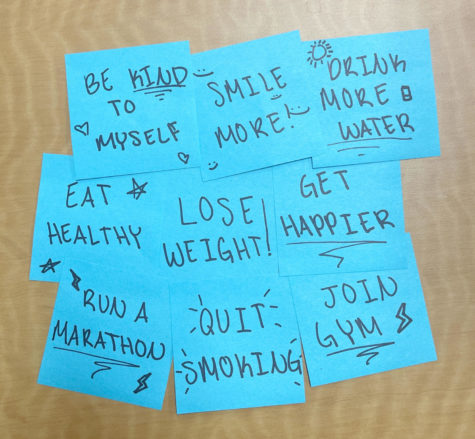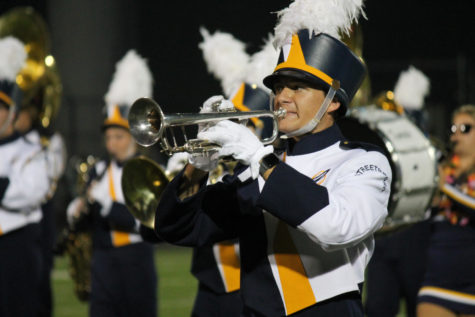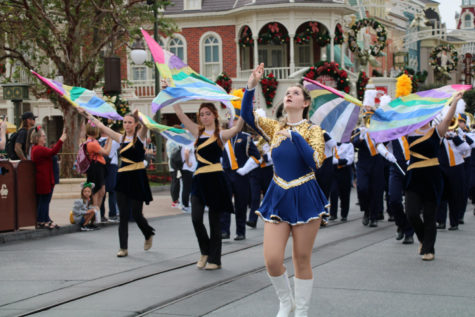Dress Code Questioned
Junior Jordyn Hartley wore ripped jeans to school one day last year and was told by a teacher to tape them up. She was headed to take a test and could not tape them right away.
“As this happened, a cheerleader in uniform walked right past us,” Hartley said. “I could see so much more of her legs than mine, and I was sent to the office, becoming behind in the class. All because my thigh was out.”
This is a very common story of people’s encounter with the dress code here. Though having an increasingly negative connotation, it does have pros as well as cons. The most commonly listed advantages to dress code are that it lessens bullying by making sure the students are all similarly dressed, though a majorly discussed con is that it does not promote individuality and expression.
Here at SHS, the dress code is rather relaxed. Overly ripped jeans, low or high cut shirts, and hats/hoods may get you asked to tape, change, or remove respectively, though Principal Jamie Hogue said around “85-90% of our students follow the dress code.”
In spite of the solid majority of students here following it, there are many differing opinions on it. Hartley said, “I don’t like that it’s restricting what I can wear…My shoulders being out shouldn’t distract people from learning.”
She also has some problems with the reasoning behind it. “I have never been distracted by someone’s hat, I have never been distracted by someone’s shoulders, it’s not sexual in any way, it’s not something I’d get distracted by.”
Similar to Hartley, junior Maddie Queen and senior Shaciya Sims said they do not quite understand the reasoning behind the dress code and find it very flawed. Queen said she does not agree with the dress code at all.
“I don’t think cheerleaders should be able to wear skirts that show so much,” she said, “…but girls who don’t cheer can’t even wear pants with holes in them.” Queen said would feel better about it if administration would make it more flexible.
Sims said though she appreciates how the dress code has lightened up since she first came to SHS freshman year, she still does not understand why it is needed in the first place.
“I feel like us as students have so much more to worry about than what clothes someone has on,” Sims said. “Like I’m worried about getting this presentation in, not about if ‘Sally’s’ legs are showing. I’m not worried about ‘Sally,’ I’m worried about my grade.”
She also pointed out that “people express themselves with their clothing nowadays,” and that schools should not be putting restrictions on that.
All three of the girls mentioned how the rules fluctuate amongst people with different body shapes.
Though disliking the dress code is a rather common theme among students, some remain relatively neutral. “I agree with the dress code to a certain extent,” junior Adam Clevinger said. “I feel like it suppresses people’s personalities and expressions of themselves, but there are some extreme things that don’t need to be worn in school.” Yet, he added, “but it shouldn’t be as strict towards females…it’s basically towards girls for the most part…What dude just stares at girls’ shoulders? Nobody’s gonna be distracted by that.”
Freshman Kevion Capers also maintains a rather impartial opinion on it, saying, “I like how there’s not a uniform or anything, I just don’t like how I can’t wear a hat or hood.”
Contrastingly, some students are completely for the dress code. Senior Benny Gentile said the dress code is a really important part of school. “School is supposed to train you for the real world,” he said. “You’re not going to walk into a job interview wearing very minimal clothing.”
He maintained his opinion on it, with the exception of “…maybe the hat rule, but they should keep the strict clothing restrictions.”
The dress code does serve a purpose, despite anyone’s opinion. However, according to the majority of the students, it is far from perfect. Most students do not think that anyone gets distracted by shoulders; but nonetheless, it still serves an essential role in getting students prepared to go out into the “real world” and its professional dress expectations.
Your donation will support the student journalists of Streetsboro High School. Your contribution will allow us to purchase equipment and cover our annual website hosting costs.






